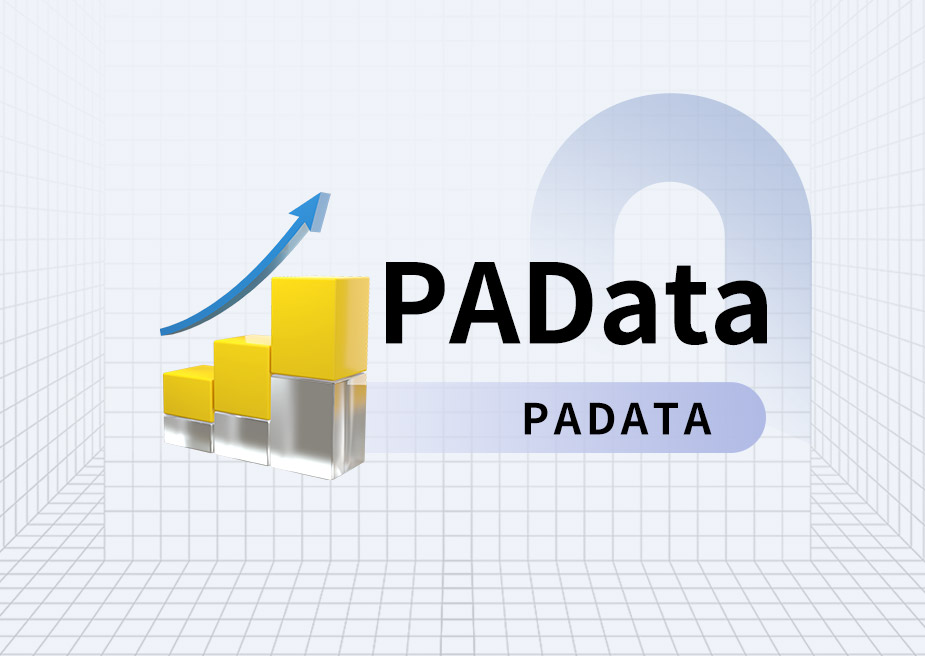Author: JAE, PANews
Following the disappointing "Uptober," investors trembled in "Red November." The once-hot DAT narrative has now faded, with the two largest ETH treasury companies, BitMNR and SharpLink, suffering combined paper losses exceeding $1.9 billion. However, Nasdaq-listed Thaimmune announced the establishment of the Canton Coin treasury on November 3rd and completed a $540 million private placement, led by DRW and Liberty City Ventures, with participation from ARK Invest and other institutions. Amidst the DAT slump, this contrarian funding round may not merely be an injection of capital, but rather another bet by traditional financial institutions on blockchain.
With over $6 trillion in tokenized assets, Canton aims to build the first ALLFi public blockchain.
The underlying infrastructure of traditional capital markets is undergoing a quiet transformation driven by a few leading institutions. Canton Network, a blockchain network primarily developed by Digital Asset, has gradually become a major blockchain platform on Wall Street. It has established a thriving ecosystem spanning banks, custodians, exchanges, and market makers, actively promoting the large-scale on-chaining of traditional financial assets.
Canton is committed to becoming the first public chain to create a new "AllFi" paradigm, focusing on integrating the advantages of DeFi and traditional finance, so that crypto native developers and institutions can achieve both the efficiency of blockchain and the compliance of traditional finance without being subject to a "one-size-fits-all" approach.
The most direct metrics for measuring infrastructure are the scale of assets it processes and the speed of transactions. Canton has moved beyond the proof-of-concept phase and entered the stage of large-scale expansion. Official sources reveal that Canton currently handles over $6 trillion in on-chain assets, with an average of 800,000 transactions per day. This scale indicates that Canton is poised to penetrate high-value traditional financial market processes and possesses institutional-grade transaction speed and liquidity.
Canton's list of investors and participants is less a capital structure table for a crypto startup and more a list of Wall Street board seats, encompassing major traditional financial giants and key players in the crypto industry. This collective endorsement and deep involvement of top institutions may suggest that they are all betting on Canton to become the next generation of global financial infrastructure.
Canton is positioned as the only public blockchain in the financial industry with on-chain privacy features. Its advantage lies in solving the privacy and compliance challenges that have been difficult for previous enterprise-grade distributed ledger technology (DLT), which is crucial for the flow of traditional capital on decentralized networks.
Traditional public blockchains typically employ a "global replication" model, meaning that all users on the network can view all on-chain transaction records. This provides a foundation of transparency and security for the retail market and the permissionless DeFi market. However, for the strictly regulated and highly competitive traditional financial market, this model constitutes an insurmountable compliance and business barrier.
For large financial institutions, public blockchains lacking privacy features generally suffer from three main pain points, which cause "complete transparency" to become a structural flaw:
- Leakage of trade secrets: Business data (customer information and proprietary trading strategies, etc.) stored on the blockchain may be captured or maliciously attacked by competitors through on-chain analysis, reverse engineering and other technical means, resulting in the exposure of trade secrets;
- Legal risks: Jurisdictions such as GDPR grant users the right to delete their data. The immutable nature of public blockchain records may conflict with these legal requirements.
- Reputation and compliance risks: Publicly available historical records mean that any transaction details may be subject to scrutiny, increasing the risk of scandals or regulatory penalties for the institution.
To meet the stringent privacy and compliance requirements of institutions, while also ensuring interoperability and scalability, Canton employs three core components: Daml smart contracts, the PoSH (Proof-of-Stake) consensus mechanism, and the synchronization domain protocol.
First, Canton's underlying framework is the Daml smart contract, which is specifically designed for multi-party participation to ensure privacy and data consistency.
Daml's key feature is its support for sub-transaction privacy. This means that in a multi-party transaction, each participant can only view transaction records relevant to themselves. For example, in the settlement process of an asset transaction, the buyer, seller, custodian, and bank can only receive and record information that is relevant only to their own business activities.
Daml can define the parties who have the right to view and modify any given treaty. This "need-to-know" mechanism, built on the principle of data minimization, directly addresses the GDPR compliance challenges faced by institutions.
Secondly, Canton uses the PoSH consensus mechanism, which is different from the "global replication" model of traditional PoW or PoS.
In the PoSH model, only validators involved in a specific transaction—that is, stakeholders in the transaction—have the authority to verify it. Through privacy configuration, the protocol ensures that validators can only view copies of data relevant to their users and cannot access any other information.
This mechanism separates the responsibilities of validators from the risks of data exposure, ensuring distributed verification and integrity of transactions while also protecting the commercial confidentiality of transaction details.
Finally, the synchronous domain architecture gives Canton horizontal scalability, with theoretically no upper limit on TPS (transactions per second).
The synchronization domain's trust model is also highly flexible, allowing Canton to maintain interoperability while meeting different institutional preferences for security and efficiency. More importantly, all transaction data transmitted between nodes is end-to-end encrypted and selectively shared only under an "on-demand" mechanism. Therefore, the synchronization domain itself is unaware of transaction content, ensuring privacy, and Canton guarantees ledger integrity across nodes even in the event of malicious actors.
In short, Canton addresses the pain points of traditional financial asset on-chain transactions through a comprehensive overall architecture design, achieving institutional-level privacy and compliance standards.
Deeply integrated with traditional financial giants, with a focus on RWA's all-weather financing capabilities.
Canton’s practical utility and market adoption have been demonstrated through a range of high-value institutional use cases.
The Canton ecosystem encompasses various roles, including banks, infrastructure providers, and liquidity providers.
In a pilot project, Canton partnered with 45 top financial institutions, asset management firms, and service providers to pioneer large-scale atomic transactions. This pilot demonstrated that traditionally independent financial systems can be connected and synchronized through Canton while maintaining privacy controls.
Therefore, the development of Canton is inseparable from the deep involvement of a large number of financial giants, who are not only users, but also co-builders and investors of the infrastructure.
Canton's decentralization is primarily reflected in its validator structure, which currently boasts nearly 600 active validator nodes, balancing governance and performance requirements. Supervalidators like Hypernative provide the network with real-time transaction security and risk management capabilities, and security is crucial for a network carrying trillions of dollars in assets.
At the asset level, Canton focuses on efficient trading of RWAs (Real-World Assets), especially highly liquid assets such as tokenized U.S. Treasuries.
A groundbreaking deal led by an industry working group exemplifies this. Participants included Bank of America, Société Générale, Citadel Securities, and Circle, who jointly completed an unconventional U.S. Treasury financing transaction on Canton during off-peak hours. This significant development unlocks 24/7 financing capabilities for assets, overcoming the time constraints and existing settlement mechanisms of traditional markets.
Currently, the daily average repurchase transaction volume of US Treasury bonds on Canton exceeds $280 billion, indicating that Canton has the potential to become a key liquidity infrastructure in traditional financial markets. This scale also confirms Canton's "AllFi" positioning, which integrates tokenized assets and privacy-preserving payment and settlement into institutional-grade workflows.
Launches a $500 million treasury strategy, becoming the only publicly traded company to receive foundation support.
On November 3, Nasdaq-listed Tharimmune announced the completion of a $540 million private funding round to establish a CC treasury. The treasury may serve as a super validator and develop related DApps to support the overall utility of the network. Tharimmune is also the only publicly traded company to receive support from the Canton Foundation.
This strategic move carries profound institutional implications:
- Compliant Access: The DAT model provides traditional institutions with a way to invest in crypto assets through the US stock market, offering a compliant indirect exposure for institutions that are subject to strict regulations and cannot directly hold crypto assets.
- Capital Acceleration: DRW and Liberty City Ventures led the majority of the funding in the form of CC (Contractual Funding), while external backers will contribute $100-200 million. This not only lays a solid capital foundation for Canton's development but will also drive the protocol's token economic model to expand in tandem with the network effect of a $6 trillion asset scale.
- Network maturity: The advancement of DAT may proceed in parallel with Canton’s large-scale institutional adoption, translating the protocol’s technological utility into financial products that can be integrated into traditional capital markets.
It is understood that CC (Canton Coin) is Canton's native token, and its economic model adopts a "minting-burning" model, directly linking network utility to economic incentives. On-chain participants such as DApp developers and validators earn CC by providing utility to the network.
The design principles of the CC token economic model are:
- Utility-driven issuance: Every CC in circulation is generated by participants providing utility to the network;
- No staking requirement: Unlike many PoS public chains, there is no staking requirement to run validator nodes on Canton, which alleviates institutions' concerns about locking up large amounts of capital.
For Canton, the DAT strategy, by packaging the investment in protocol tokens as a regulated financial instrument, significantly alleviates institutional concerns about cryptocurrency volatility or complex regulatory rules. This not only lays the groundwork for attracting both traditional capital and network incentives to grow simultaneously, but also adds another layer of value accumulation to CC's utility-driven model. To date, CC's burn/mint ratio has steadily increased to 0.24.
As tokenized US Treasury bonds and other assets continue to be added to the blockchain, Canton may gradually become the central system of a "blockchain Wall Street." However, whether it can truly bridge the last mile between traditional finance and the crypto market will largely depend on its regulatory compatibility. Despite Canton's robust privacy features, regulatory uncertainties remain, such as the SEC's scrutiny of tokenized assets or the EU's attitude towards GDPR compatibility with blockchain technology.
Critics in the market argue that while PoSH is privacy-friendly, it may reduce overall transparency and increase the risk of money laundering. Furthermore, the burning mechanism of CC (compensated debt instruments) relies on real-world activity. If adoption slows, it could impact deflationary effects.







